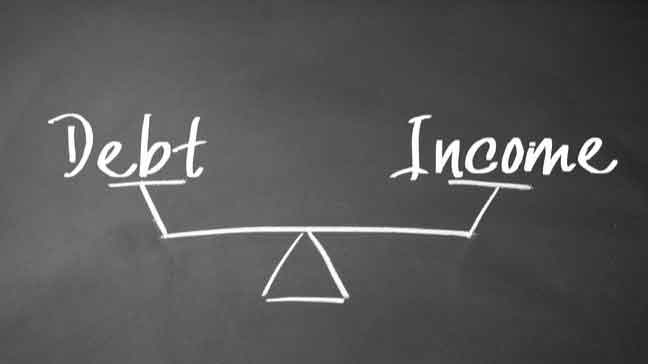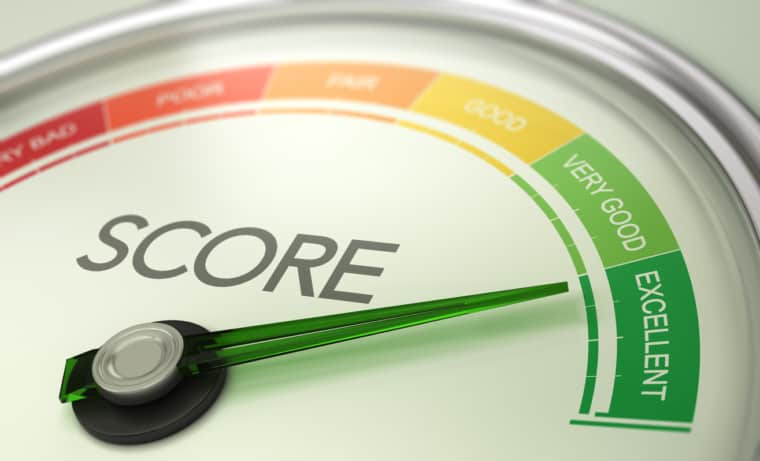Ways To Improve Your Chances Of Getting A Personal Loan
There’s an old adage when it comes to borrowing money: “The only way to get a loan is to prove that you do not need it.” When it comes to personal loans, which are almost always “unsecured loans” that are not backed by collateral, that adage rings true more often than not. You can, however, boost your chances of receiving such a loan by taking a few steps.
The first step is to see where you stand.
Collect all the statements from any debt you have, all bank accounts or investments you have, and a copy of your credit report from all three major credit bureaus: Equifax, Experian, and TransUnion. With your credit report, you should also get a copy of your FICO® score. Once you have all of this assembled, you can see what you need to do. Your FICO® score must usually be pristine, or nearly so, to be considered for a personal loan. Some companies, however, might issue you a bad credit loan. These loans, however, usually have exorbitant interest rates and suffocating rules and penalties for nonpayment. As always, and in keeping with the “old adage,” the better your FICO® score, the more favorable the terms of any loan you secure will be.
Because some banks or other lenders might demand a credit score of 800 or above even to think about a unsecured loan, it behooves you to try to make your FICO® score as good as possible. To do that, begin with examining all three of your credit reports. You are looking for either fraudulent entries or otherwise legitimate entries that contain errors. Truly legitimate entries that are 100-percent accurate are there to stay until they expire, which can be as much as 10 years in the case of certain bankruptcies. Most items expire after seven years. There is nothing you can do about those legitimate and accurate items.
You can, however, dispute any entry on your credit report. If you dispute something that is legitimate and true, though, the credit bureau or the reporting company can consider your dispute frivolous. Gather all your old bills for any account that has a negative entry on your credit report. Review all the relevant data. If something is amiss, craft a dispute letter and tell both the bureau and the reporting company, or companies, what you think is wrong. Send them copies of all relevant data. Never send originals. Also, keep copies of your dispute letter or letters.
Generally, if the debt cannot be verified in its entirety, it will be removed from your credit report, which will result in a higher FICO® score for you. Sometimes, these changes are free, and sometimes you will have to pay a fee of some sort. Remember, fraudulent charges are automatically considered unverifiable and will almost always be removed. Once you begin this process, make and keep copies of everything. If ever there was a time to cover all bases, this is it!
The process of cleaning up one’s credit report is detail-intensive, time-consuming, and in many cases, frustrating. Still, it pays to be diligent and to make sure anything and everything that adversely affects your FICO® score is thoroughly checked and rechecked. If you have suffered fraudulent activity, it might be a good idea to invest in an identity protection service. Such services are usually not expensive, and most of them let you check your credit score as part of your services.
Once you’ve removed any incorrect or fraudulent items from your credit reports, it’s time to assess your actual debt. Having a lot of outstanding debts is the second most important factor when it comes to getting approved for a loan. Your “credit utilization,” which is a fancy way of saying “how much you owe,” comprises 30 percent of your credit score. Even people eligible for a good credit loan might be denied if they owe large sums elsewhere. Remember, the chief aim of some institutions lending you money is not to help you. Rather, those people’s primary goal is to make money off of you without helping you. If you have too much to pay off on the side, many lenders will be afraid that you won’t be able to pay them back on time.
Once you know how much you owe elsewhere, it’s time to devise a plan for paying it down as quickly as possible without putting you in the poor house. This might mean you have to cut back on luxuries like a new car, cable television, and extravagant dinners out. Replace them with a bus pass, Netflix, and home-cooked meals. You might also have to moonlight delivering pizzas or something similar. It’s important to remember that you don’t have to pay everything off to improve your chances of getting a loan, although that is your primary goal.
Lenders look at something Called the Debt-to-Income Ratio

Basically, that means they look at what you owe and what you make, divide the former by the latter, and convert it to a decimal. To even think of asking about a personal loan, your debt-to-income ratio must be less than 50 percent. Most lenders recommend that it be lower than 40 percent because higher rates than that can “snowball” into bigger problems. As you can see, there are two ways of reducing the ratio: getting rid of debt and increasing income. Increasing income is quicker and easier than paying down debt. As an example, let’s say you owe $5,000 in monthly bills, which would include mortgage payments, any child support payments, if applicable, car loans, student loans, utilities, etc.
To have a real chance of securing the loan you want, you would have to make at least $15,000 monthly. Let’s assume you make $13,000 a month, which would put your ratio at 38 percent. If you moonlight delivering pizzas 20 hours a week at minimum wage plus tips, figuring an average $2 tip per $20 order while delivering two orders per hour, that’s roughly $230 extra per week. If you take leftover pizza home for dinner, that will save you roughly $50 monthly on your food costs. Now, your ratio is 35 percent. At the very worst, those 3 percent show the lender that you are at least making an effort to control your debt.
While you’re cleaning up credit reports, lowering debt, and increasing income, you also should avoid any “hard” checks of your credit. Each such check reduces your FICO® score by a few points. In the grand scheme of things, these few points won’t matter much, but when you’re looking for a good credit loan, those “few points” could push you into the territory of a bad credit loan, which you want to avoid if at all possible. Everyone knows that mortgages, car loans, and credit card applications result in hard checks. Some may not realize, however, that opening a new cell phone account or trying to rent an apartment might also result in such “hard” checks.
Aside from lowering your score, “hard” checks one after the other might send a message to a lender that you are a bigger risk than that lender would like. Before applying for your loan, it’s a good idea to avoid any “hard” checks for at least six months.
When you’re finally ready to apply for the loan, be reasonable and realistic about which lenders to ask. If you see something for an almost “too-good-to-be-true” interest rate, it is likely a lender that caters to people with sterling credit, high incomes, and very low risk: in other words, the people who “don’t actually need the money.” If you have only been able to raise your credit score to 650 or so, it would be a waste of time to ask that lender for a loan. Further, it would result in a “hard” check against your credit, which could hurt your chances with other, more reasonable lenders.
It would be a good idea to speak with us prior to applying for the loan. You could ask, “OK, here is what I owe, my FICO® score, and the steps I have both taken and plan to take to improve my situation. What are my chances of getting this loan?” Then, if things don’t look favorable, you can ask, “What else can I do to improve my chances?” It is important to note, too, that if you have great credit and apply to a lender that deals with people with bad credit, you will be approved but at a much higher interest rate than you would be with a lender that is better-suite to your credit level. We’ll let you know the skinny when we first speak.

Your situation, despite your best efforts, may not be conducive to receiving the loan you need or want. In these situations, it’s probably best to apply with a cosigner. Applying with a cosigner requires a great deal of two-way trust. In short, you are making the monthly payments on a loan that used the cosigner’s credit. If you miss payments, the cosigner is responsible for them. If you default, both your credit and that of the cosigner will suffer the hit. For these reasons, if you have to go the route of applying with a cosigner, it’s best to hash out plenty of details beforehand so that there are no surprises afterward.
Before applying, you should also make sure that you meet the employment requirements. Some lenders ask that you be at your job for a certain amount of time before they will say, “Yes,” to a loan. That could be 90 days, six months, a year, or any other amount of time. It pays to ask the lender before asking and getting a “hard” check on your credit when the lender was never planning on saying, “Yes,” in the first place.
The next thing to figure out is how much to request. That might seem obvious, but many people ask for far too much. For example, if you want to get the loan to buy something that costs $25,000, ask for $25,000 and not one dollar more. Asking for more than you need looks risky to lenders, and it creates larger payments on your part because of not only the larger principal than expected but also because you might have a higher interest rate because of the higher risk seen by the lender. You also don’t want to ask for a loan for something frivolous. You might have exceptional credit, a solid source of income, and no other outstanding debts of note, but if you ask for a loan to buy 5,000 cases of Rice-a-Roni or some such off-the-wall item, the lender is very likely to say, “No!”
The last step on your journey toward receiving a personal loan is to check everything. Make sure that:
- Your application is fully completed and that there are no errors.
- You proofread any letters or other documentation so that they are likewise error-free.
- You have fulfilled all the obligations required by the lender.
Doing all of these steps will not guarantee that you will be approved for your loan. “Checking all the boxes,” as it were, will give you the best chance, however. In summation, those steps are:
- Clean up your credit report if possible.
- Pay down your debt and decrease your debt-to-income ratio.
- Avoid “hard” credit checks for at least six months prior to applying for the loan.
- Pick a lender that is compatible with your situation.
- Secure a cosigner if necessary.
- Ensure you meet the work requirements.
- Ask only for what you need and nothing more.
- Be sure that the loan is for something the lender will find reasonable.
- Proofread, check, and double check all documents, letters, and statements to ensure completeness and accuracy.
When you’re ready to take the plunge and ask for the loan you need, we can help you through the process. Give us a call at your earliest convenience and set up an appointment.


